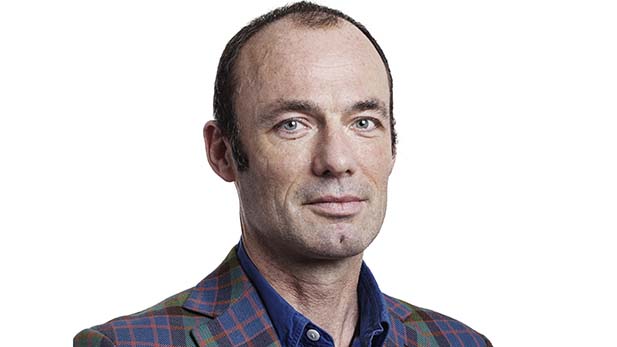Doctoral defence: “What matters with strategy is what the organization gives to life, not the bottom line”

Photo: Kia Hartelius
What is your most important contribution to the field of strategy?
“Strategy is a concern for how an organization develops character. To be concerned with character (what in Ancient Greek was called ethos) is to take two things very seriously. First, developing an ethical awareness of the constancy and consistency of one’s actions in relation to others. Second, developing an aesthetic sensibility for the organizational forms through which such awareness flourishes. What matters with strategy is what the organization gives to life, not the bottom line. Many thinkers in the field of strategy believe the bottom line to be sacrosanct; speaking strategically, I believe it to be a distraction.”
What is the biggest misunderstanding about strategy?
“Strategy should tackle the little challenges. Grand challenges are, by their nature, too abstract, too distant, too smooth and beyond the compass of organizational form. To state you can meet them - as though they were objects one can calculate and control - is conceited. Strategy should work with what is graspable, immediate and ordinary. For example, IKEA should consider the undoubted use-value its blue bags, typically used to carry products rather than being a product in itself. In what way does the blue bag add to its sense of ethos? Yet to consider such things runs against traditional thinking in strategy, where the emphasis is always on thinking of the whole organization, and more generally on ‘thinking big’. My work is an attempt to give strategy the form of ‘thinking small’. Then things get done, in interesting ways.”
You have been inspired by thinking from the humanities – philosophy, art and literature – to reformulate strategic thinking. What is the most interesting contribution from the humanities perspective?
“I understand strategy as the creation of an organizational form. If we think of it like making a sculpture. There is a coming together of materials (assets, architectural spaces, machinery), of shapes (hierarchies, divisions, units, communication channels, networks), of purpose (values, measurement systems) and designers (strategists, advisors).
Typically this coming together has taken a rather rigid and upright form – akin to the old statues we see adorning the gateways to the parks of Frederiksberg. A larger than life, male figure, cast in long-lasting, heavy material designed to ‘look down’ upon the viewer. It says: here I am, take notice of my distinctive presence, take notice of my grand achievements: I am significant.
We still encourage students and managers to think of strategy in this way: what is it that makes you distinctive, larger than life, impressive, solid and placed as an immobile centre to the wider turning world?
Sculpture, and art practice generally, has moved on from making these overbearing, conceited and often ponderous objects. Strategy seems still to be stuck.
Sculptors are interested in rhythm, in how materials evoke and play off one another, how the form settles into a wider landscape, how it is all of our senses might be engaged, not just the eyes, in how an entire form might be suggested in a mere gesture, and in how we might always learn from those who have gone before us. They have had the humility to go back and acknowledge the genius of earlier artists, taking seriously the abstracting intensity of non-European sculptures, or the collective productions of artisans as found in the stone work of Gothic cathedrals. Strategists might learn a lot from this.”
You recommend that strategies be practiced more like ’wayfinding’. Can you clarify this?
“Strategy grounded in awareness of space and time: a strategist knows where an organization has been, where it is, and where it might be going. In traditional strategic thinking this understanding of space and time is rendered in navigational questions: ‘What is our destination?’; ‘How long is the journey?’; ‘What resources will we need, and which terrain and obstacles must we overcome?’ Yet the world often overspills our attempts to knowledgeably map and direct it, and strategy becomes a pretense: we say we can navigate, but really we have no idea.
Wayfinding evokes a different experience of moving through space and time: it is knowing as we go along, rather than knowing from above. Andy Warhol said we spend so much of our life looking, but hardly any time observing. Wayfinding is this observing, being alive to the nuances and possibilities of a situation, free from any blinkered, pre-configured sense of what we require from it.”
Strategy is the art of the general. In wayfinding the general view is realized by avoiding being stuck to specific agreements, routines and knowledge; it is a commitment to the open.“
What is your best advice for today’s leaders and their strategy processes?
“Resist the urge for making spectacular interventions. Resist the advice to somehow be bigger, stronger, better than others, as though the world were nothing but a competition of would be winners and losers. Instead, create organizational forms in which difference is not only tolerated but is encouraged as a source of provocation and hence learning.“
What is your best advice for today’s employees and their approach to strategy in their everyday work life?
“Strategists are not a Guardian class. Do not rely on strategists to think and act for you, that is your responsibility. We are all strategists.”
The doctoral defence will take place 25 March, 10:00 to14:00, Råvarebygningen, Porcelænshaven 22, 2000 Frederiksberg, room PHRs.20.
Read more about the defence and please register
For more information please contact:
Professor Robin Holt, Department of Management, Politics and Philosophy, CBS
Journalist, CBS Communications, Matilde Hørmand-Pallesen